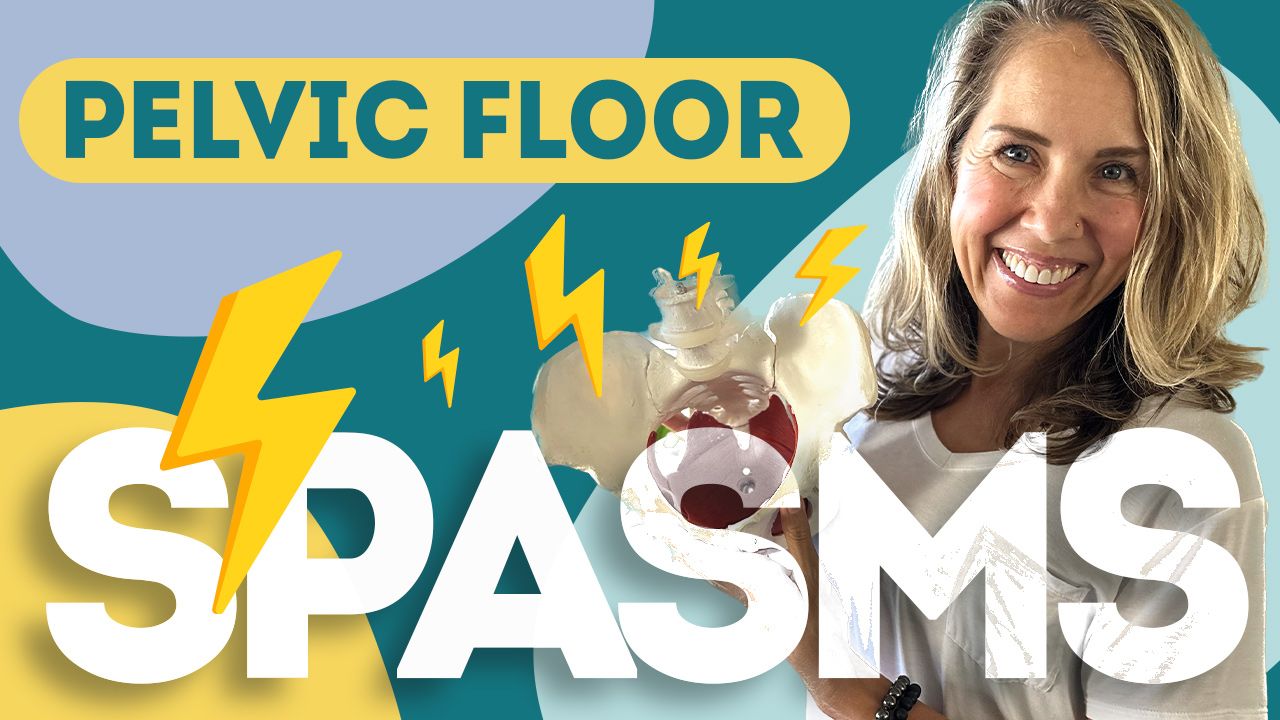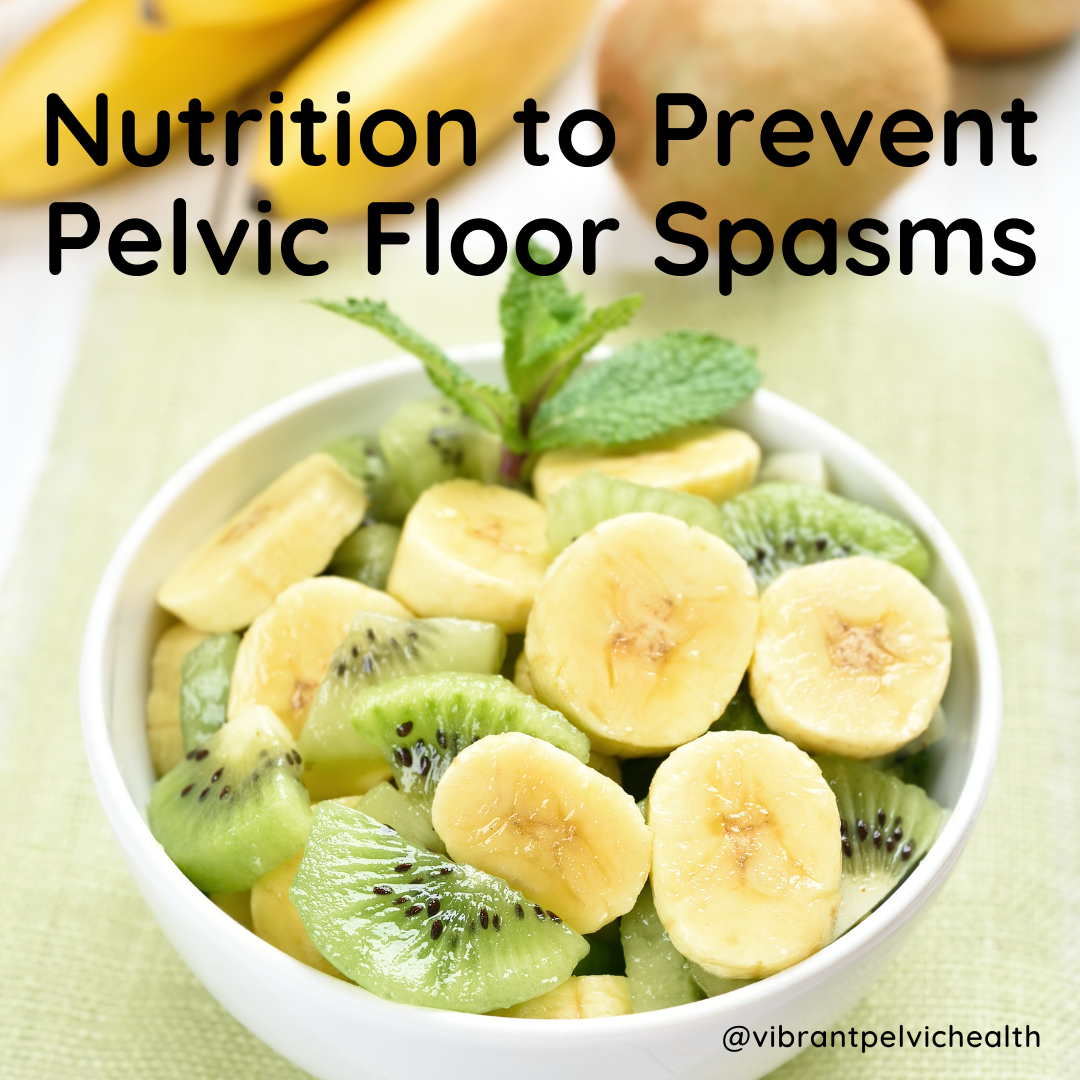What do pelvic floor spasms feel like?

What are pelvic floor muscle spasms?
Muscle spasms can happen in ANY part of the body, including the pelvic floor. A spasm is when a muscle involuntarily contracts. Sometimes these contractions present as pulses or twitches, and sometimes the contraction STAYS! In this case, the muscle "knots up" and won't relax.
You might have experienced muscle spasms in your thighs or hamstrings, calves, hands, the arches of your foot, or even in the tiny muscles around your eyes. But they can also occur in your pelvic floor! Spasms are usually transient (they go away) and benign (harmless), but they can certainly be uncomfortable.
What do pelvic floor spasms feel like?
Pelvic floor spasms feel like bands or knots of tension, often in your perineum or in the posterior (back) part of your pelvic floor near your anus. Pelvic floor spasms can be steady and aching, or they can pulse or twitch. You may experience a sense of tenderness, aching, burning, or sharpness. For more info about what pelvic floor spasms feel like, watch this 13-minute YouTube video with exercises to help.
If you'd like EVEN MORE info about pelvic floor spasms, then keep reading this blog for common triggers and tools to help.
Why do pelvic floor spasms happen?
Common causes of pelvic floor spasms include stress, bowel issues, too much exercise or working your muscles in new ways, fatigue or exhaustion, dehydration, and mineral depletion.
1) Stress Causes Tension and Pain in Your Muscles
Stress is the most common cause I've seen for pelvic floor spasms, and in fact, a pelvic floor spasm can be a "red flag" that something STRESSFUL is going on in your life that needs to be addressed! I've personally experienced stress-related pelvic floor spasms that show up in my body BEFORE my mind has registered the amount of emotional or mental stress I'm under.

Your body is always talking to you... Are you listening? If you're experiencing pelvic floor spasms, then it might be time to assess the stressors in your life and see if stress management techniques can be prioritized.
2) Bowel Issues
Pelvic floor muscle spasms can occur before, during, or after bowel movements. This is often due to anxiety or stress surrounding whether or not you're going to have a bowel movement (common in people who are chronically constipated), and it can also be due to muscle spasms that make it difficult and/or painful to poop.
Spasms and pain AFTER voiding are quite common, especially in people with pelvic floor hypertonicity. Your muscles may reflexively (unconsciously & automatically) tighten up after releasing the void because they're accustomed to being tight/tense! Your muscles momentarily release and allow the void to pass, and then they're like, "What the heck? This isn't normal! That felt strange to let something pass through! I've got to tighten back up... I've got to get back to my baseline level of tension!"
Our bodies are always just trying to protect us, and sometimes they can become a bit OVER-protective when they are stuck in patterns of excessive tension.
One way to help this situation is to address underlying pelvic floor hypertonicity so that your baseline level of resting tension isn't so tight. This is where one-on-one work with a pelvic health professional is important, and you can also utilize my Overcome program for at-home support.
Also, just knowing that this type of reflexive reaction could happen — and that it's your body's way of trying to protect itself — can be helpful. Go into the bathroom with calming deep breaths, and remind your body that it's safe... it's safe to relax, and it's safe to remain relaxed after voiding. It doesn't have to tighten back up!
If you've noticed pelvic floor tension related to bowel movements, then ask your healthcare provider about dyssynergic defecation (when the muscles and nerves in the pelvic floor fail to coordinate correctly to allow poop to pass).
3) Working Muscles in New Ways
Sometimes people with pelvic floor dysfunction will experience muscle spasms when they first begin pelvic floor therapy. This is your body's response to the muscles working and moving in new ways! Here are a few common things you might see:
- Muscle soreness and cramping when you begin strengthening the pelvic floor.
- Twitches and pulses as tight/hypertonic muscles begin to relax.
- Pelvic floor muscles that spasm and tighten as a protective mechanism if therapy is progressing too fast, too soon.
Talk to your pelvic floor therapist if you're noticing spasms. They aren't necessarily "bad," but they are a signal that needs to be noticed and addressed. Sometimes spasms are a normal sign of progress, and you should keep moving forward! However, sometimes they indicate that a modification to the workout program (or rehab program) is needed.
4) Dehydration and Mineral Depletion
This is important for ALL muscles of your body: Stay hydrated! Drink plenty of clean, pure water. Your pelvic floor is a collection of small muscles and fascia, all of which are made mostly (at least 70%) of water, and they require sufficient hydration to work well. They also require electrolytes and minerals to function, and many of us are depleted in these substances, especially when it comes to magnesium and potassium.

Proper hydration and nutrition also help with digestion and help you have smooth, easy-to-pass bowel movements. This can help prevent pain during elimination and can prevent or decrease reactive spasms when pooping (see item #2, above). Nutrition tips:
- Include potassium-rich foods in your diet such as bananas, avocado, spinach, dried apricots, oranges, kiwi, sweet potatoes, navy beans, and coconut water.
- If you and your healthcare provider determine that you need magnesium supplementation, two items you might consider (along with your provider's recommendations) could be Natural Calm Magnesium Powder and/or Trace Minerals Concentrace Drops in your water. Use as directed. (Note: the above shopping links are Amazon affiliate links, meaning that if you make a purchase through them, I will receive a small amount of compensation. Thank you for supporting my blog!)
Good to be Aware:
While the above-listed issues are MUCH MORE COMMON reasons for muscle spasms, the conditions listed below are important to be aware of. Talk to your doctor if you think you might need to rule out any of the following:
- Kidney Disease: When kidneys lose their ability to work well, you might notice muscle cramps, along with other symptoms such as nausea, vomiting, and urinating more or less frequently. If you have diabetes, high blood pressure, or other kidney-related issues, then check with your doctor about your spasms.
- Pinched Nerve: Spinal nerves exit the spine to innervate different muscles, including muscles in the lower back, hip, and pelvic areas. These nerves can become compressed and "pinched" if the disks between the spine bones slip or rupture. Pelvic nerves can also be compressed or pinched by other muscles in the pelvic region. This "pinching" can cause changes in the muscles that the nerve controls, including pain, weakness, twitching, and cramping. Your doctor can diagnose the issue during a physical exam or with an MRI or CT scan.
What to do about pelvic floor spasms?
Watch the following video for some great tips, including deep breathing, perineal massage, and exercises (stretches) that can be used during a spasm OR proactively — before spasms happen — for prevention.
Address the Root Cause of Pelvic Floor Spasms
Look at the reasons listed above to address the root cause of your pelvic floor spasms. Manage your stress levels, exercise regularly and consistently in a way that's safe for YOUR body, stay hydrated, eat foods that are full of vitamins and minerals, and watch your posture. The way you sit, stand, and move matters! Poor posture can absolutely impact the muscles of your lower back, hips, and pelvic floor.
If you need posture information, I have an entire playlist dedicated to proper posture here.
LAST TIP: What You Resist Persists
My final tip is to bring a loving awareness to what is. If you have a pelvic floor spasm, rather than resist it and fear it, take some slow deep breaths and LEAN INTO IT. Allow it. Acceptance is the hardest part, but it will set you free! This is not about being complacent or resigned, it's simply relaxing into what's happening right now, which (paradoxically) allows your muscles to relax and unwind.
If you want a great introductory course to pelvic health, muscle tension, and the mind-body connection, check out BEGIN! It includes that absolute FIRST STEPS to pelvic floor relief... For anyone. Talk to your pelvic floor therapist to see if BEGIN would be a good fit for you!
Does your pelvic floor need help?
Many women think they just need live with the changes they’re experiencing
“down there,” but this is NOT the case. Take the short quiz to find out if you have issues that can be solved naturally.







